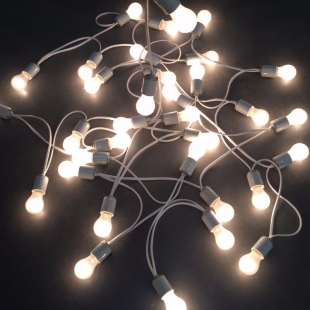In my day-to-day job, I find myself thinking a lot about how others see art. I spend time in the galleries with visitors; at my desk formulating programs that will connect with people and ask them to engage in new ways; or working on accessibility initiatives to consider those who we are not reaching effectively. I am often reminded of the importance of art viewing as not only a comfort, but a challenge, a wonder, or – sometimes – even a chore. At this particular moment, with many individuals home-bound during the COVID19 global pandemic, the experience of art viewing has been on my mind even more. What does it mean to connect to an artwork? I have been thinking about how I will recognize my privilege of getting to be with the art – how will I experience it, when I am allowed to next?
Throughout my time interning and working at museums, I have had the repeated pleasure of witnessing the processing of looking in those around me. As a student educator at the Smith Museum of Art, I designed and led tours for K-12 school groups. On a regular basis, I was awe-struck by the students. On some days they were so wiggly we used our bodies as a kind of tuning-fork – trying to match the artwork by stretching out our arms or legs. On other days the children seemed to access deep wisdom: I will never forget the experience of a 4th grade class debating the landscape status of an Ed Ruscha print. The eyes of a child, it seems, have not yet been clouded, they are not yet worried to be wrong.
My grandfather has Alzheimer’s. His mind works in other mysterious ways. Across the country institutions are hosting programs for individuals with the disease, hoping that the art will tap into some deeper brain frequency, and allow participants to find comfort. There are foggy days and moments of clarity. It seems that each time I go back home to visit he is another step removed. I think of a Carrie Yamaoka work that was once on view at ICA called “crawl/ stretch 2”: a sheet of black reflective vinyl covered in resin, that looked like raindrops on a window at night time.
What does it mean to experience art without all of your senses – to watch a video without being able to hear the artist’s voice, or to touch a material without being able to see the full object? Rather than thinking of this as some incomplete experience, can it be resituated as a different kind of interaction? I think so – like closing your eyes during a meditation.
I am a proponent of a teaching method called Visual Thinking Strategies (VTS), which uses open-ended questions to foster collaborative conversation, and encourages participants to come to their own personalized interpretations of art objects. This epistemology creates space for unique backgrounds and experiences to build meaning individually and jointly, rather than asking for tombstone information (artist’s name, object title, year, intent) to be the foregrounded experience. I believe that this makes people feel welcome in front of an object, to be part of the work, rather than a passive onlooker. I wonder, though, about the value of not just slow looking, but also re-looking. What would those 4th graders say about the Ruscha on another visit on another day or in another decade?
I have the pleasure of looking at works over and over, using my Monday eyes or my Friday eyes, or revisiting a show in September or in December. I have the privilege of reassessing. Each time I visit an object I get to re-learn that process of looking, by responding with my new experiences, and being guided by what the object asks of me on any given day. Today, where does it want you to look first? What if you are the height of a 4th grader? What if you can’t hear the voice? Like each new visit to my grandfather, I approach the artwork with my memory of it, and have to build from there – what did I mistake last time? Why does it look so inarticulate today? What might I see that I missed before?
I have been thinking about my duty to look and look more closely, then return to look again. On same days, it feels like a game, on others an uphill climb to give an object my full attention. Now, sitting on my couch, working from home, unable to meet the public and try to experience alongside them, I face a new challenge of learning to look, and realize that the key is not the looking – the intense stare at an object – but the seeing, the presence of the artwork, the experience of being in a space with it. I look forward to the return, to re-learning my looking, as soon as I can.



